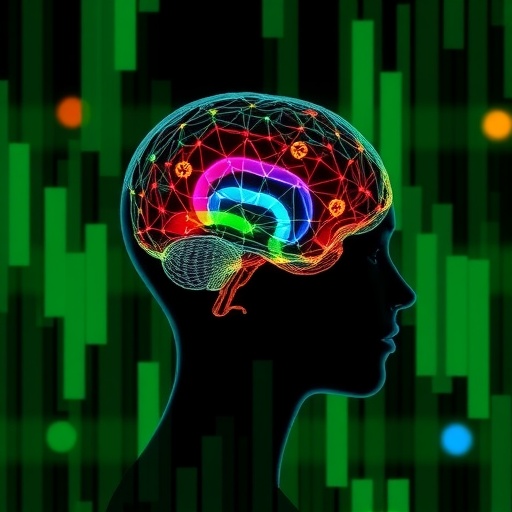A groundbreaking study recently published in the Journal of Autism and Developmental Disorders sheds new light on the complex neural dynamics associated with autism through the analysis of EEG spectral characteristics. The research, spearheaded by a team of distinguished scientists including M. Shama and colleagues, examines the trial-to-trial variability in EEG patterns to extract meaningful insights about autism spectrum disorder (ASD). In a comprehensive analysis that intertwines cutting-edge technology with cognitive neuroscience, this study provides a compelling narrative about how variations in brain activity can inform our understanding of autism.
At the core of this research lies an exploration of electroencephalography (EEG), a non-invasive method that maps electrical activity in the brain. Through the use of advanced analytical techniques, researchers can illuminate how different individuals on the autism spectrum exhibit distinct patterns of neural engagement. This variability is crucial for diagnosing and tailoring individualized interventions, making the innovations presented in the study not just academic in nature, but of immediate practical relevance.
For years, the scientific community has been keenly aware of the heterogeneity within the autism spectrum, with each individual presenting a unique amalgamation of symptoms and strengths. Traditional diagnostic methods have often relied on behavioral assessments, which may overlook the underlying neural mechanisms contributing to such diversity. In this study, researchers utilize EEG to delve into the profound yet subtle aspects of brain function that may be missed in conventional assessments.
The crux of the study lies in the concept of trial-to-trial variability in EEG spectral characteristics. The authors detail how this variability can serve as an indicator of neurodevelopmental differences amongst individuals with autism. By meticulously recording EEG data across various cognitive tasks, the researchers are able to pinpoint how certain patterns of brain activity correlate with specific behavioral manifestations of ASD. This revolutionary approach not only broadens the scope of autism research but also opens doors to more nuanced therapeutic strategies.
As part of their methodology, the researchers incorporated machine learning algorithms to analyze the EEG data. These sophisticated computational techniques enable researchers to sift through vast amounts of information, identifying patterns and predicting outcomes with unprecedented accuracy. The integration of machine learning into neurobiological research exemplifies how interdisciplinary collaboration can yield transformative results, merging traditional neuroscience with modern technological advancements.
Moreover, the implications of these findings extend beyond a mere understanding of autism. By establishing a neurobiological framework for interpreting trial-to-trial variability, this research sets a precedent for exploring other neurodevelopmental disorders through a similar lens. Scientists may soon leverage these techniques to derive insights into conditions such as ADHD, dyslexia, and various other cognitive impairments. This paradigm shift in research methodology could pave the way for more effective interventions and improved quality of life for countless individuals.
The study’s results resonate not only within the academic community but also underscore the importance of early intervention in autism. With EEG technology, clinicians could theoretically monitor an individual’s brain activity in real-time, allowing for immediate adjustments in therapeutic approaches. The potential for real-time feedback could revolutionize treatment options, ultimately enhancing developmental outcomes for children diagnosed with ASD.
As this research joins the expanding body of knowledge surrounding autism, it raises important questions about the intersection of nature and nurture in the development of neural systems. What environmental factors may influence the spectral characteristics observed in EEG readings? How can therapeutics harness this knowledge to create more impactful, personalized treatment plans? These questions merit further exploration and discussion, potentially sparking a new wave of research that will tackle the intricacies of autism from both genetic and environmental perspectives.
Furthermore, this study highlights the importance of collaboration in science. The multidisciplinary approach adopted by the authors showcases the necessity of diverse expertise in tackling complex issues such as autism. Neuroscientists, psychologists, data analysts, and educators all play pivotal roles in shaping a comprehensive understanding of autism spectrum disorders, a fact that should inspire future research teams to bridge gaps across disciplines.
In conclusion, the study authored by M. Shama and colleagues represents a significant milestone in autism research. It not only enhances our understanding of EEG spectral characteristics but also emphasizes the value of trial-to-trial variability as a critical component in understanding neurodevelopmental conditions. As research continues to unfold in this area, it is likely that these findings will hold transformative potential, fostering new diagnostic tools and targeted interventions that address the specific needs of individuals on the autism spectrum.
As the conversation surrounding mental health and neurodevelopmental disorders evolves, studies like this one remind us of the intricate workings of the human brain and the boundless quest for knowledge that persists within the scientific community. The combination of advanced imaging techniques, machine learning, and collaborative methodologies fosters a fertile environment for innovation, offering hope for better interventions and outcomes for the diverse individuals affected by autism.
Subject of Research: EEG spectral characteristics and their variability in understanding autism spectrum disorder.
Article Title: Harnessing Trial-to-Trial Variability of EEG Spectral Characteristics to Understand Autism.
Article References:
M. Shama, D., Su, M., Beeler-Duden, S. et al. Harnessing Trial-to-Trial Variability of EEG Spectral Characteristics to Understand Autism.
J Autism Dev Disord (2025). https://doi.org/10.1007/s10803-025-07125-y
Image Credits: AI Generated
DOI: https://doi.org/10.1007/s10803-025-07125-y
Keywords: Autism, EEG, neurodevelopmental disorders, trial-to-trial variability, machine learning, early intervention, brain activity, personalized treatment.
Tags: advanced analytical techniques in EEG studiescognitive neuroscience and autism researchEEG variability in autism spectrum disorderelectrical activity in the brain and autismheterogeneity within autism spectrumindividualized interventions for autismJournal of Autism and Developmental Disordersneurophysiological insights into autismnon-invasive brain activity mappingsignificance of EEG in autism diagnosistrial-to-trial variability in EEG patternsunderstanding neural dynamics in autism





